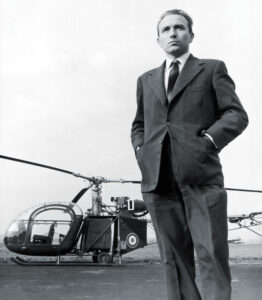The evolution of technology has close ties to the progress of aviation. Sometimes evolutionary cycles result in incremental changes, such as when gradual improvements in technology progressively improved propeller design. Sometimes the change is more dramatic, such as when the introduction of jet engines ushered in a new era of flight. The NaturalPoint TrackIR view system is an example of a major shift in user interface technology that takes flight simulation gaming to a new level.
The TrackIR 4:Pro ($179.95, requires Microsoft Windows 2000/XP, 800 Mhz processor, 128MB RAM, 5MB hard drive space, CD-ROM drive, USB port, www.naturalpoint.com) allows a user to intuitively control the view system in a flight simulation by moving his head instead of pressing keyboard or joystick buttons.
Traditionally, users have controlled flight simulation views by pressing keyboard keys to glance out the left or right window of the cockpit. Such systems can be cumbersome, since they require fumbling with keys while flying. The next evolution involved linking the view functions to a hat switch on a joystick, which made it easier to watch the screen while flying. The NaturalPoint’s TrackIR 4:Pro completely changes this paradigm.
The TrackIR device consists of two components. The first is a sensor that sits on top of the PC monitor. The second is a clip with reflective surfaces that the user attaches to his head via a baseball cap. The sensor tracks the movement of the reflective surfaces on the head clip and translates them into head movements in the game. This system is much more intuitive than previous interfaces because when the players want to look to the right, they simply turn to the right. The view in the virtual cockpit changes to match head movement. A small head movement to the left, for example, yields a slight shift in view so the simulation displays the left instrument panel and throttles. But users never have to turn farther than about 30 degrees from a center view of the PC’s monitor, enabling them to keep their eyes on the screen. With practice, TrackIR greatly helps players maintain situational awareness.
TrackIR dramatically improves combat flying. The ability to track a target on the ground or in the sky without having to look at the keyboard considerably eases the virtual pilot’s workload. Some simulations have tried to include a “padlock” view that automatically tracks an object, but switching between padlock and instrument panel views still involved a key press. TrackIR facilitates these views with a more natural head movement.
Gamers can simulate pitch and yaw with their heads (looking left, right, up and down) in all the games that support TrackIR. This is the most valuable function TrackIR provides. Some flight simulations even add support to enable an additional axis of head movement. Lateral head movement to the left or right might simulate a pilot moving his head closer to the window to look down the side of the fuselage. Vertical head movements could simulate rising up to see over the nose of the aircraft. This type of enhanced support can add a tremendous sense of realism to any simulation.
The TrackIR system does have some limitations. First, it can only be used with games that support it. Natural Point has made good strides in getting flight and automobile simulation makers to adopt the TrackIR system. Most but not all of the current and popular simulations support the device, including Microsoft Flight Simulator 2004, the IL-2 Sturmovik family of games, Lock On Modern Air Combat, X-Plane and Falcon 4.0 Allied Force. Second, TrackIR sometimes works too well. The sensor is very sensitive, and the swiftly moving view may result in disorientation or even motion sickness. Learning to use smooth, controlled movements can help alleviate this.
The TrackIR system is also expensive for a peripheral. Gamers on a budget might consider the less expensive TrackIR 3:Pro unit, which is less compact than the TrackIR 4:Pro but offers comparable functionality. Either way, TrackIR is useful technology worth serious consideration by serious PC pilots.
Originally published in the September 2006 issue of Aviation History. To subscribe, click here.




